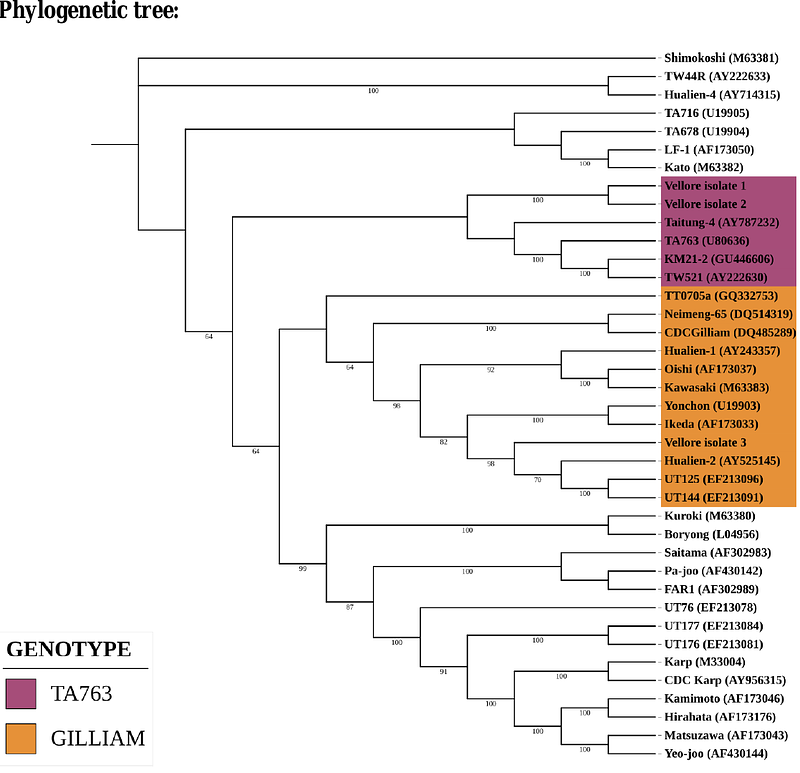First isolate of Orientia tsutsugamushi from Vellore, South India

First isolate of Orientia tsutsugamushi from Vellore, South India
Kumaraswamy, J.; Kirubanandan, A.; Nagarajan, L. S.; Gunasekaran, K.; KPP, A.; Prakash, J. A. J.
AbstractBackground: Scrub typhus a common cause of acute febrile illness in India caused by Orientia tsutsugamushi an obligate intracellular bacterium requiring cell culture for isolation. Cell lines like Vero and L929 are most suitable for isolating and maintaining this organism. This study was undertaken to isolate and characterize of Orientia tsutsugamushi from whole blood samples at a tertiary care centre in Southern India. Methods: The PBMCs (peripheral blood mononuclear cells) collected from scrub typhus positive (47kDa qPCR positive) patients were inoculated into Vero and L929 cell line at 80% confluence for primary isolation. The inoculated flasks were incubated at 37{degrees}C with 5% CO2 for 30 days and examined for presence of Orientia tsutsugamushi on the day 10, 15, 20 post-inoculation and everyday thereafter for a maximum of 30 days post inoculation. The scrapings were subjected to Giemsa staining, IFA, 47kDa qPCR and transmission electron microscopy (TEM). The isolates were passaged 3-4 times to ensure viability and then stored in DMEM with 10% FBS (-80{degrees}C). Genotyping of the isolates was performed by amplifying a 650 bp segment of the TSA 56 (type specific antigen 56) gene. Results: Amongst the 50 samples inoculated, three were culture positive as confirmed by 47 kDa qPCR at 24th day of inoculation. This was further confirmed by Giemsa, IFA staining and TEM. The 650bp amplicons showed 99.5 to 100% homology with Orientia tsutsugamushi MW604716, MH003839, MW604718, MW604717, MH922787 and MH003838 strains. Phylogenetic analysis revealed that 2 isolates belong to TA763 genotype and one belongs to Gilliam genotype. Conclusions: We have successfully isolated and characterised the Orientia tsutsugamushi for the first time at our centre from PBMCs. Based on the partial TSA56 gene sequence our isolates belongs to TA763 and Gilliam genotype. More number of samples are being processed for identifying further isolates followed by genomic analysis.